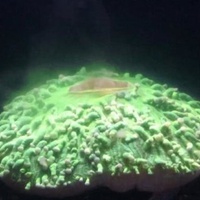Caught in the act: Coral's bleaching behavior
Science Daily, 11 Sep 2016.
Coral researchers have for the first time captured the specific behavior of a coral as it's bleaching. While scientists have known for some time that coral bleaching occurs when the relationship between the coral and their Symbiodinium breaks down as ocean temperatures rise, new research show for the first time how this coral removes the algae. Read the full story in Science Daily.
Coral researchers have for the first time captured the specific behaviour of a coral as it's bleaching.
The team from QUT in Australia used a clever combination of microscope, digital camera and smart tablet to record close-up, detailed time-lapse videos of a coral species' physical reaction to heat stress, showing evidence for the first time that it employs pulsed inflation.
To simulate rising sea surface temperatures, researchers Brett Lewis and Dr Luke Nothdurft from QUT's marine facility in the School of Earth, Environmental and Biological Sciences placed solitary corals, Heliofungia actiniformis, into controlled aquaria, before heating the water up.
Their resulting videos, described in the peer-reviewed Coral Reefs, show the unhappy corals belching Symbiodinium, tiny algae cells that live within coral tissue and give corals their vibrant colours.
"What's really interesting is just how quickly and violently the coral forcefully evicted its resident symbionts," said Mr Lewis, from QUT's Science and Engineering Faculty.
"The H. actiniformis began ejecting the symbionts within the first two hours of us raising the water temperature of the system."
Mr Lewis said previous studied had shown H. actiniformis was one of the very few corals on the Great Barrier Reef considered to be relatively resilient to bleaching, even as neighbouring species suffered the full effects.
Read the full story in Science Daily.












